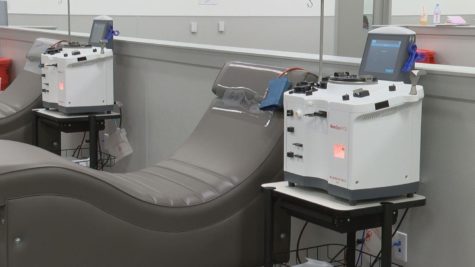Breast Health
October 14, 2015
The month of October is dedicated to acknowledging breast cancer prevalence, increasing awareness, and continuing research support and funding to find a cure. Breast cancer is the most common cancer among women in the United States and the second leading cause of death. About 1 in 8 women will develop invasive breast cancer in their life time, meaning the malignant cancer cells start in the breast ducts or glands and grow into the breast2.
The Breast Cancer Society predicts that 231,840 cases of invasive breast cancer will be diagnosed this year, and an estimated 40,000 will die from this disease. Also, 60,290 new cases of non-invasive will be diagnosed. A woman’s risk of breast cancer doubles if she has a mother, sister, or daughter who has been diagnosed with breast cancer, and 85% of women with breast cancer have no previous family history of it. A man’s risk of breast cancer is about 1 in 1,000 throughout his lifetime.
The prevalence of breast cancer has leveled off since 1990 due to technological measures that make early detection more reliable. There has been a 24% decline in mortality due to early detection and treatment improvements2. Increased awareness and health coverage can also be attributed to the decrease in mortality.
The pathology of breast cancer is very complex multi-faceted biological process. Any epithelial breast cells can be randomly mutated, thus causing carcinoma1. Invasive breast cancer is greatly affected by gene expression alterations1. There is a series of genetic changes that plays in the multistep process of in the progression of breast cancer4. Breast cancer is classified and progresses through 5 stages, 0-IV, if left untreated. These stages are classified based on the size of group of malignant cells or tumor size2.
Signs and symptoms of breast cancer include but are not subject to: unusual breast lump(s), nipple discharge, nipple retraction, skin changes on the breast, and breast dimpling1. Also, unusual breast pain and tenderness is a potential sign of breast cancer. Early stages of breast cancer are typically unnoticeable, that’s why it is very important women complete monthly self-breast exams, get yearly mammograms and physical check-ups. Later signs and symptoms include: an “orange peel” texture on the outside of the breast, vaginal pain, unintentional weight loss, enlarged lymph nodes in the armpit, and visible veins on the breast2.
There are several known risk factors that contribute to an increased chance of developing breast cancer, however the causes of most non-modifiable and modifiable risk factors are still unknown today. What is known about all cancers is there is damaged DNA. Analyzing gene expression is one way to being to encode the processes and development of cancer. Research is on going to discover the root cause of DNA mutations that causes cancer.
Many factors play into the progression and development of breast cancer. The greatest non-modifiable risk factors are age and gender3. Two out of three women diagnosed with breast cancer are over the age of 552. Family history also plays a role, if a first-degree family member has breast cancer, the risk nearly doubles2. Between 5-10% of breast cancer is genetically related through abnormal gene passage2. Once a woman has breast cancer, there is a 3 to 4 times chance she develops breast cancer in another part of the same breast or the other breast4. Women who are post-menopausal are also at a greater risk of developing breast cancer due to changes in hormones and estrogen levels and the age at menarche4.
Though women cannot control un-modifiable risk factors related to breast cancer, lifestyle changes can be changed to lower the possibility of developing breast cancer such as having a healthy diet, getting regular physical activity, not smoking, and not over consuming alcoholic beverages. It is important to know your family history and your potential to develop breast cancer. If you have present risk factors, make changes now to lower your risk later on life.
One of the most important preventative methods women between the ages of 12-39 should currently be doing are monthly self-breast exams. A self-breast exam is a quick an easy way to feel for any noticeable changes in the breast. John Hopkins Medical Center says that women who feel a lump during a self-exam detect 40% of diagnosed breast cancers.
How do you perform a self-breast exam?
They are best executed in the shower, in front of a mirror, or while lying down. While in the shower you should use your fingers and move them in a circular pattern from the outside to the center, feeling for any lumps or abnormalities. In front of a mirror you should look at your breasts for any swelling (not related to your menstrual cycle), contouring, changes in the nipple, or changes in the breast skin. While lying down, lift the arm up of the breast being examined and feel for consistency in the tissue. Lastly, examine each nipple by squeezing them gently to check for discharge and lumps.
At yearly physical check-ups, prior to the age of 40, your healthcare provider should do a physical breast exam. After the age of 40 you should get a yearly mammogram. If you do not have health insurance there are resources available to get mammograms. To find out if you qualify for a free or low-cost mammogram and where to get screened in Iowa call: 1 (800) 369-2229. Early diagnosis is key in fighting this disease.
















